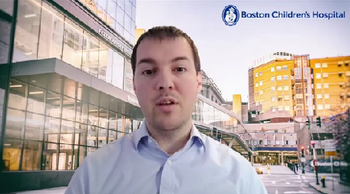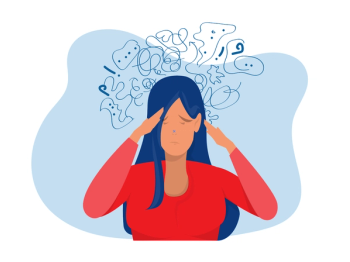
Road Rage: Are Our Patients Driving Angry?
Road rage is well known in popular culture and to many people it is a common and dangerous experience. Alcohol problems, illicit drug use and general psychiatric distress are associated with road rage perpetration. Road rage incidents may also result in psychiatric distress. Although treatment for road rage has received little research attention, encouraging results have been reported from specialized programs.
Psychiatric Times
April 2005
Vol. XXII
Issue 4
Road rage is a topic that has received much attention recently with reports of serious incidents appearing in the media on an almost daily basis. Road rage has no standard definition, although it has been defined as a situation where "a driver or passenger attempts to kill, injure or intimidate a pedestrian or another driver or passenger or to damage their car in a traffic incident" (Smart and Mann, 2002a). Newspaper reports on road rage have greatly increased in Canada (Smart and Mann, 2002b) and the United States (Fumento, 1998) making it seem like a new phenomenon. However, historical References to road rage can be found as early as 420 B.C.E. in Sophocles' play Oedipus the King (Roche, 2001); a road rage incident is the reason why Oedipus kills his father. The life of Lord Byron contains several incidents of road rage (Smart et al., unpublished data).
Prevalence of Road Rage
Several studies have established that road rage is a common and dangerous experience. Deaths and injuries have been reported in Australia (Harding et al., 1998), Canada (Smart and Mann, 2002b), the United Kingdom (Joint, 1997) and the United States (Batten et al., 2000; James and Nahl, 2000). Wells-Parker et al. (2002) conducted a national U.S. survey of 1,382 adult drivers and found that 30% complained about other drivers; 17% had yelled at other drivers; 3% had chased other drivers or prevented others from passing; and about 1% to 2% had gotten out of their cars to hurt or argue with other drivers, had deliberately hit other cars, or had carried a weapon. In Arizona, 34% of 790 drivers surveyed had made obscene gestures or cursed angrily, and 28% had aggressively followed or blocked other vehicles (Miller et al., 2002). About 11% always (4%) or sometimes (7%) carried a gun in their cars, and hostile behavior while driving was much more common among drivers who had guns.
Smart et al. (2003b) found that about half of 1,395 adult survey respondents (46.6%) in Ontario, Canada, were shouted at, cursed at or had rude gestures directed at them in the past year, and 7.2% were threatened with personal injury or car damage. This study and others found that road rage is more common among males and younger drivers. Road rage perpetration is also more common for drivers who often drive on busy roads and those who drive high-performance cars (Smart et al., 2004).
There is frequently an overlap between victims of road rage and its perpetrators. Fong et al. (2001) studied the experience of road rage in 131 general practice clinic attendees in England, and found that 53% reported a recent incident of road rage. Among these, the investigators identified victims, perpetrators and a mixed group, noting that perpetrators often characterized themselves as victims as well. In a representative sample of 2,610 adults, road rage perpetrators were more than five times as likely to report being victims as well in comparison to non-perpetrators (Asbridge et al., 2003). These observations are consistent with other areas of violence where perpetration and victimization are frequently found to occur together.
The evidence suggests that perpetrators of more serious forms of road rage are a small proportion of the population. Five groups were identified in a cluster analytic study of a general population sample of 2,610 adults (Smart et al., 2003a) (Figure). The smallest group (Cluster 3) was characterized as frequent road ragers, and they accounted for a large proportion of reported serious perpetration incidents. This group was also significantly more likely to report victimization.
Associated Psychiatric Issues
Psychiatric morbidity and road rage have been linked in several studies. Driver aggression has been linked to personality factors such as the Type A behavior pattern--low impulse control and high levels of aggression and stress (e.g., Galovski and Blanchard, 2004; Hennessy and Wiesenthal, 2002). More recent studies have focused on psychiatric problems in more serious instances of road rage.
Intermittent explosive disorder is an Axis I diagnosis whose core feature is episodes of aggression that result in serious assaults or property destruction. While there are some indications that this disorder may be more prevalent among road rage perpetrators this possibility has not yet been systematically evaluated (Galovski and Blanchard, 2002). Several studies have linked road rage behavior and impulse control disorders. For example, Jerome (2004) found that adults with attention-deficit/hyperactivity disorder frequently experienced frustration and impulsive behavior while driving and exhibited road rage behavior. College students with ADHD reported more driving anger and displayed it in aggressive and socially unacceptable ways (Richards et al., 2002).
Evidence for a link of road rage with alcohol has also been found. Wells-Parker et al. (2002) and Yu et al. (2004) found that road rage offenders more often reported driving over the legal alcohol limit. Mann et al. (2004) found that both victims and perpetrators were more likely to report alcohol problems as measured on the Alcohol Use Disorders Identification Test (AUDIT) problems subscale. However, Fong et al. (2001) found no evidence of heavier drinking or alcohol problems among road rage perpetrators in a general practice sample. In addition, Smart and Mann (2002b) found that in a series of newspaper reports of serious road rage incidents not one account mentioned alcohol. Thus, the link between alcohol and road rage is not likely to be a simple one. The role of alcohol in road rage may be similar to its role in other forms of violence where an important but complex relationship is observed (Mann et al., 2004; Pernanen, 1991).
Violence and illicit drug use are often linked (Macdonald et al., 2003). Available evidence suggests that a similar link between road rage and illicit drug use may exist as well. Fong et al. (2001) found that road rage victims and perpetrators were significantly more likely to report lifetime illicit drug use. Smart et al. (in press) found that frequent road rage perpetrators were more likely to report use of cannabis and cocaine. Butters et al. (in press) have also found that frequent road rage perpetrators were also significantly more likely to report Ecstasy (MDMA [3,4-methylenedioxymethamphetamine]) use. Again, the nature of these associations is not yet clear. While they could reflect causal influence, other pathways such as common social environments or predisposing personality factors (e.g., Donovan, 1993) need to be considered.
Road rage is associated with psychiatric morbidity and distress. Fong et al. (2001) found that victims and perpetrators scored significantly higher on the Clinical Interview Schedule Revised (CIS-R) than controls. Smart et al. (2003a) observed significant elevations on the 12-item General Health Questionnaire (GHQ-12), in particular for the frequent road rage group. Butters et al. (in press) observed that individuals who scored above the screening level for psychiatric distress on the GHQ (3) were twice as likely to report frequent road rage involvement as those below the screening level. Psychiatric distress as measured by the GHQ primarily reflects stress, anxiety and depression.
The observed relationship with distress could indicate that psychiatric distress leads to road rage. Certainly this is consistent with observations that road rage is also linked to experience of significant life events (Fong et al., 2001). However, a reverse relationship is also likely. A serious road rage victimization incident is likely to be a serious traumatic experience for an individual. Thus, the sequelae of road rage victimization, up to and including posttraumatic stress disorder, may be expected. Therefore, available data indicating a link between psychiatric distress, measured by the GHQ, may also be suggesting that road rage is a significant but under-recognized source of psychological trauma.
Treating the Rage
Treatment for road rage perpetrators has received little research attention. This is surprising in view of the relative frequency of the experience of road rage in the population. Galovski and Blanchard (2004) described the introduction of a specialized program for aggressive driving behaviors in a rural New York county and documented that within six months, 21 individuals had been referred to the program.
They noted that the major source of referrals was the courts. If public and legal interest continues, the courts are likely to be seeking more resources for treating road rage offenders.
The available evidence on the value of specific treatments is sparse. Uncontrolled studies and studies with surrogate populations such as students have suggested that aggressive or angry responses to driving situations can be reduced (e.g., Deffenbacher et al., 2000). Galovski and Blanchard (2002) compared a cognitive-behavioral therapy program to a symptom monitoring control condition in individuals who were self-referred (n=8) or referred by courts (n=20) for driving-related anger problems. The treatment program emphasized anger management and modifying responses to driving situations. The results were encouraging, with the treatment group showing significant reductions on various self-report measures of general anger, angry driving and problematic driving in a follow-up conducted two months after program completion. In separate comparisons of all treatment participants with control participants who were not aggressive drivers, the aggressive drivers showed significant reductions in psychophysiological reactivity to audio-taped vignettes of aggressive driving situations (Galovski et al., 2003). Galovski and Blanchard (2002) noted that drivers who met the criteria for intermittent explosive disorder tended to respond less well to treatment, suggesting that this group may be a more difficult group to treat.
No studies have specifically addressed treatment of the traumatic sequelae of serious road rage victimization. However, research with collision survivors and other trauma victims indicates that psychotherapeutic and pharmacologic interventions can significantly reduce adverse symptoms (e.g., Rodgers and Norman, 2004).
Conclusions
Road rage victimization and perpetration are common experiences in their milder forms, but even in their more serious forms may occur more often than was once believed. There is a substantial degree of comorbidity associated with road rage in its more serious forms, with serious perpetrators being more likely to demonstrate psychiatric distress, alcohol problems and illicit drug use. Experience of serious victimization incidents is likely to have traumatic consequences similar to the experience of other forms of violence. Efforts to identify effective treatments for the victims and perpetrators of road rage are in their infancy. Since road rage increases with urbanization and stressful driving conditions, the need for better detection, understanding, prevention and treatment is likely to increase in the future.
Dr. Smart is senior scientist and principal in Social, Prevention and Health Policy Research at the Centre for Addiction and Mental Health in Toronto.
Dr. Mann is senior scientist in Social, Prevention and Health Policy Research at the Centre for Addiction and Mental Health and associate professor of Public Health Sciences at the University of Toronto.
Dr. Goldbloom is senior medical advisor in Education and Public Affairs at the Centre for Addiction and Mental Health, where he also served as inaugural physician-in-chief from 1998 to 2003. He is also professor of psychiatry at the University of Toronto.
References
Asbridge M, Smart RG, Mann RE (2003), The 'homogamy' of road rage: understanding the relationship between victimization and offending among aggressive and violent motorists. Violence Vict 18(5):517-531.
Batten PJ, Penn DW, Bloom JD (2000), A 36-year history of fatal road rage in Marion County, Oregon: 1963-1998. J Forensic Sci 45(2):397-399.
Butters J, Smart RG, Mann RE (in press), Predicting road rage in the Ontario adult population: problem drinking, illicit drug use and psychiatric distress. Can J Public Health.
Deffenbacher JL, Huff ME, Lynch RS et al. (2000), Characteristics and treatments of high anger drivers. J Consult Psychol 47:5-17.
Donovan JE (1993), Young adult drinking-driving: behavioral and psychosocial correlates. J Stud Alcohol 54(5):600-613.
Fong G, Frost D, Stansfield S (2001), Road rage: a psychiatric phenomenon? Soc Psychiatry Psychiatr Epidemiol 36(6):277-286.
Fumento M (1998), "Road rage" versus reality. Atlantic Monthly 282(2):12-15.
Galovski TE, Blanchard EB (2002), The effectiveness of a brief psychological intervention on court-referred and self-referred aggressive drivers. Behav Res Ther 40(12):1385-1402.
Galovski TE, Blanchard EB (2004), Road rage: a domain for psychological intervention? Aggress Violent Behav 9(2):105-127.
Galovski TE, Blanchard EB, Malta LS, Freidenberg BM (2003), The psychophsiology of aggressive drivers: comparison to non-aggressive drivers and pre- to post-treatment change following a cognitive-behavioural treatment. Behav Res Ther 41(9):1055-1067.
Harding RW, Morgan FH, Indemann D et al. (1998), Road rage and the epidemiology of violence: something old, something new. Studies in Crime Prevention 7:221-238.
Hennessy DA, Wiesenthal DL (2002), Aggression, violence, and vengeance among male and female drivers. Transportation Quarterly 56(4):65-75.
James L, Nahl D (2000), Road Rage and Aggressive Driving: Steering Clear of Highway Warfare. Amherst, N.Y.: Prometheus Books.
Jerome L (2004), Road rage: old wine in a new bottle. Can J Psychiatry 49(10):709-710 [letter].
Joint M (1997), Road Rage. Basingstoke, Hants, U.K.: The Automobile Association.
Macdonald S, Anglin-Bodrug K, Mann RE et al. (2003), Injury risk associated with cannabis and cocaine use. Drug Alcohol Depend 72(2):99-115.
Mann RE, Smart RG, Stoduto G et al. (2004), Alcohol consumption and problems among road rage victims and perpetrators. J Stud Alcohol 65(2):161-168.
Miller M, Azrael D, Hemenway D, Solop FI (2002), 'Road rage' in Arizona: armed and dangerous. Accid Anal Prev 34(6):807-814.
Pernanen K (1991), Alcohol in Human Violence. New York: Guilford Press.
Richards T, Deffenbacher J, Rosen L (2002), Driving anger and other driving-related behaviors in high and low ADHD symptom college students. J Atten Disord 6(1):25-38.
Roche P, trans. (2001), Sophocles: The Complete Plays. New York: Signet Classics.
Rodgers CS, Norman SB (2004), Considering PTSD in the treatment of female victims of intimate partner violence. Psychiatric Times 21(4):68-71.
Smart RG, Ashbridge M, Mann RE, Adalf EM (2003a), Psychiatric distress among road rage victims and perpetrators. Can J Psychiatry 48(10):681-688.
Smart RG, Butters J, Mann RE et al. (in press), Alcohol, drug use and psychiatric problems among frequent road ragers. The International Council on Addiction, Drugs and Traffic Safety Reporter.
Smart RG, Mann RE (2002a), Deaths and injuries from road rage: cases in Canadian newspapers. CMAJ 167(7):761-762 [letter].
Smart RG, Mann RE (2002b), Is road rage a serious traffic problem? Traffic Inj Prev 3(3):183-189.
Smart RG, Mann RE, Stoduto G (2003b), The prevalence of road rage: estimates from Ontario. Can J Public Health 94(4):247-250 [see comment].
Smart RG, Stoduto G, Mann RE, Adlaf E (2004), Road rage experience and behavior: vehicle, exposure, and driver factors. Traffic Inj Prev 5(4):343-348.
Wells-Parker E, Ceminsky J, Hallberg V et al. (2002), An exploratory study of the relationship between road rage and crash experience in a representative sample of US drivers. Accid Anal Prev 34(3):271-278.
Yu J, Evans PC, Perfetti L (2004), Road aggression among drinking drivers: alcohol and non-alcohol effects on aggressive driving and road rage. J Crim Justice 32(5):421-430.
Newsletter
Receive trusted psychiatric news, expert analysis, and clinical insights — subscribe today to support your practice and your patients.

















